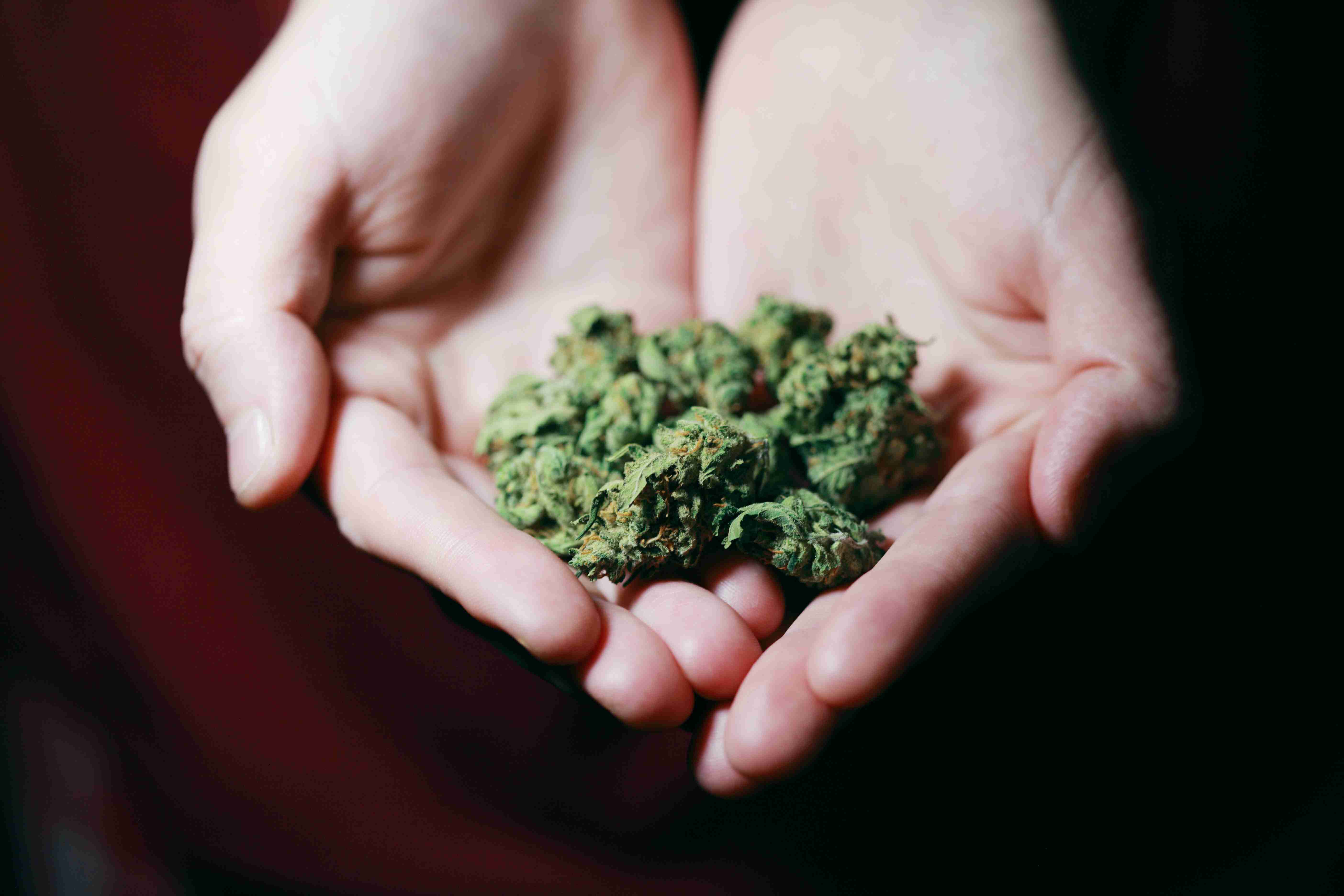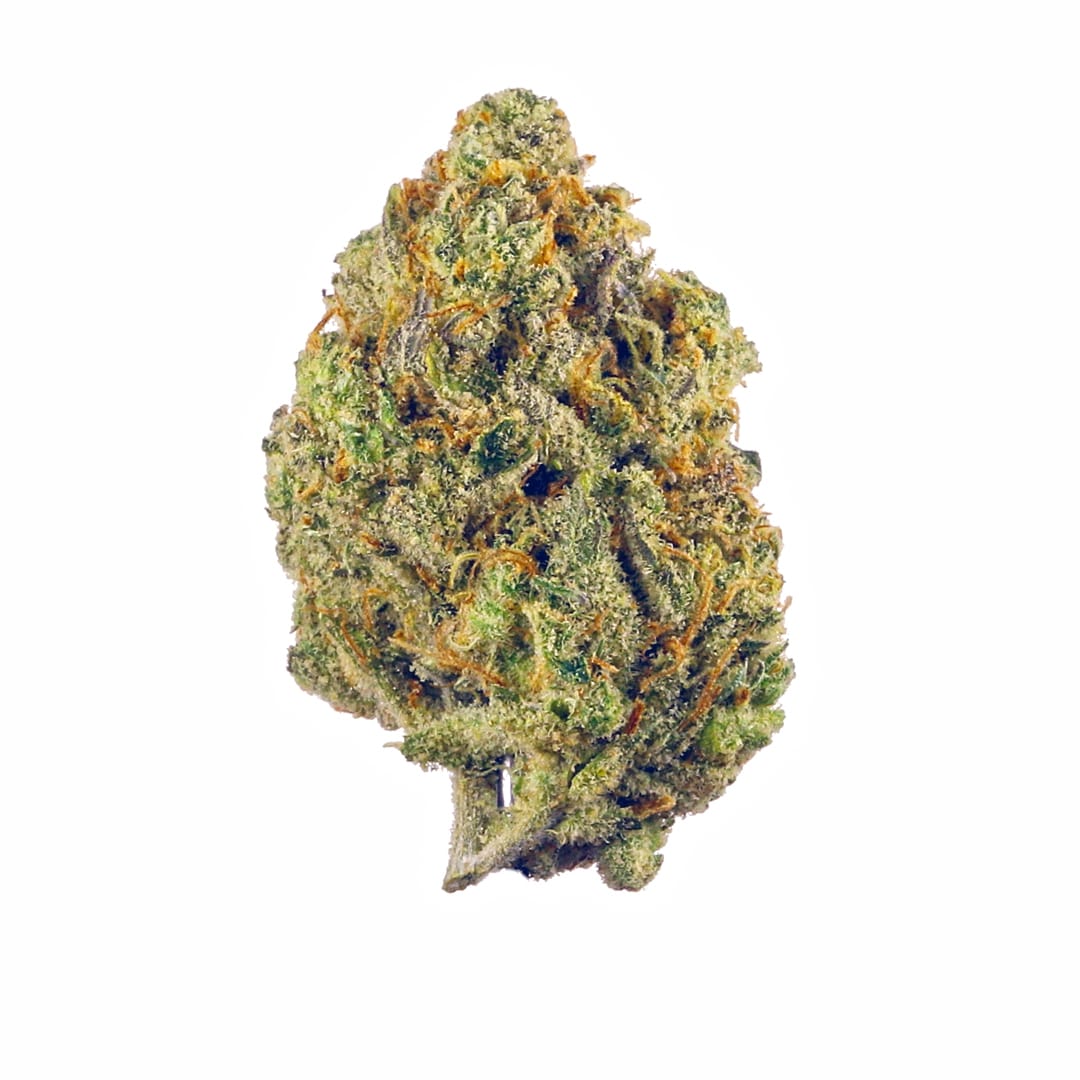Cannabis Selection Guide: How to differentiate between high-quality and low-quality cannabis buds and dry flowers.

How to distinguish between high-quality cannabis buds and low-quality ones
Many people believe they can tell good quality buds from bad ones with just a glance, but they fail to consider certain subtle differences. In this guide, we will walk you through each distinction that you may quickly realize between cannabis buds once you start smoking weed. While everyone claims their weed is top-notch, you may have already noticed when this flower falls short of the mark. In contrast, when you have high-quality cannabis in your possession, you will know immediately.
To ensure that you only purchase the best buds, it is crucial to understand the difference between top-shelf fire and brick weed. You don't need to be a connoisseur either, as the differentiating features can be seen and smelled without assistance. Of course, knowing the differences will help you navigate the shelves, but it is especially helpful for judging the plants in your own garden. In turn, this will help you make any necessary adjustments.
Types of Cannabis Buds
Cannabis flowers come in a variety of quality ranges. You may talk about stickiness, terpene distribution, flavor, texture, or various other factors. For simplicity, we'll narrow the range down to three basic categories: low, mid, and high-grade buds.
Low Quality
Poor-quality cannabis looks unfortunate, mainly because it endures a long journey stuffed into small packages. These buds are appropriately called "brick weed" and usually arrive at their destination in dense cube forms.
Rarely grown for quality or not cultivated with care at all, producers associated with this level of cannabis are purely for profit. It is usually a black-market product, and low-quality cannabis typically comes from the southern borders of the United States and the European continent.
Of course, some home growers intending to sell may accidentally produce cannabis of similar quality. Novice growers often mess up in this process, leaving behind dry, unremarkable buds.
Low-quality cannabis can be distinguished from normal, high-quality cannabis by its smell, appearance, color, presence of mold or bugs, and trimmed appearance. Although this requires a lot of accumulated experience, avoid using oddly shaped or untrusted cannabis.
Medium Quality
Domestic growers around the world mostly produce buds that fall into this category. These flowers stand out from low-quality cannabis thanks to their improved color, enhanced aroma, and distinct flavor.
Most growers manage to produce this quality of cannabis by adjusting their nutrients, watering schedule, and environmental variables. However, the most important factor is the pride and effort they put into their work.
If you're looking for medium-quality buds or just want to avoid bad stuff, steer clear of all the characteristics of low-quality cannabis. Although it may take a lot of experience to move up to higher-quality cannabis, you can avoid bad products just by eyeballing them and refusing to purchase them.
High-Grade (Top-Shelf, Fire)
High-grade buds have many names, but they all describe their enormous flavor and mind-blowing effects. These buds are hard to find outside of big cities and weed-growing areas. Usually, they are the products of skilled farmers and breeding masters from hotspots like Northern California, Spain, and the Netherlands.
You'll find these nuggets packed in jars on the shelves of reputable dispensaries and highly rated coffee shops.
If you're looking for the best money can buy, first find a trusted and well-reviewed vendor. Generally, you won't be able to find top-tier products through normal channels at normal prices. Get ready to spend some money and pick from the trusted shelves, where the appearance, aroma, and sophistication of the buds should be immediately apparent.
How to distinguish good buds from bad buds: a guide
We hope the above summary can make it easier to differentiate the quality of a given bud, but it may become a bit complex. Below, we will delve into and carefully examine cannabis buds.
Smell
Well-grown high-quality cannabis should have a distinct aroma, ranging from a faint sweetness to a smell like soil or diesel, indicating a high terpene content. Poor quality cannabis typically lacks any aroma, resembling dry hay or alfalfa, which is undoubtedly a sign of poor growth and/or curing. Rich aromas (such as coffee and chocolate) are usually indica traits, while bright, acidic citrus flavors are typically sativa traits. Hybrids may contain both traits simultaneously.
As we discussed earlier, the aromatic molecules known as terpenes are the reason for this signature scent. Although strains may have similar underlying scents, most strains have unique aromas due to differences in terpene concentration.
You may be familiar with the small, shiny structures on the surface of cannabis buds and sugar leaves. These mushroom-shaped glands, called trichomes, exude terpenes during the flowering stage.
When you open a package and the smell of terpenes hits you directly, you'll know you're dealing with high-quality weed. While pleasant smells and cannabis quality are not unconditionally related, the former likely indicates the latter. The smells of flowers, fuel, earth, spices, sugar, fruit, citrus, and berries are the most common aromas.
The quality of a strain's terpene distribution depends on several variables:
- Genetics: Some strains are genetically predisposed to extract more aromatic terpenes than others, primarily due to selective breeding practices.
- Drying and curing: Genetics can only achieve so much. Properly drying, curing, and storing cannabis will preserve the terpenes' characteristics and improve the flower's aroma.
- Correct nutrients: During the flowering stage, cannabis plants require a higher demand for potassium and phosphorus and a lower demand for nitrogen. Achieving this balance will yield some fragrant flowers.
- Living soil: A strong microbial population will help plants obtain all the nutrients they need to form optimal terpenoid compounds.
- Companion planting: Many growers claim that planting basil near cannabis helps improve its aroma.
Key points for selection:
- Avoid buds that smell like dry hay or have no discernible scent at all.
- The aroma is often positively correlated with your usage experience, so choosing a flavor you like is important.
Colors
While you can't judge a book by its cover, you can definitely judge a cannabis bud by its appearance. For a trained eye, there are many factors that can indicate quality, and color is one of the most important.
High-quality cannabis buds should typically be green, not brown! The range of greens can vary from lighter frosty greens to darker forest greens, with undertones of purple, pink, and gold.
Cannabis flowers come in different shades such as purple, orange, green, and red. Rather than being about color, it's more about exuding quality, but also vitality. Healthy and well-grown cannabis buds should look bright and shiny.
This vitality signifies good genetics, solid growing techniques, and proper curing and storage. In contrast, low-quality cannabis looks dull, lifeless, and pale. These buds are typically dark green to brown, pale in color, and ultimately unappealing.
When shopping in a dispensary, an important question to ask is: Does this cannabis look like it comes from a healthy plant?
High-quality cannabis typically has edges of purple, pink, blue, and other bright colors that are very eye-catching. However, if the color is rusty red, brown, tan, or yellow, it may come from an unhealthy plant. Buds that appear whitish (without frosty crystals) have been overexposed to light, which is not conducive to their growth. Try to avoid these products, as they won't provide you with a quality experience.
Key points to look for:
- Avoid cannabis buds that are brown, tan, yellow, red, or white.
- High-quality cannabis should primarily be green with various edge colors and green undertones.
Left side: Good stuff. Right side: Really not okay.
Cute Trichomes
Trichomes are the hallmark of a skilled cannabis cultivator. They are the most abundant feature on the surface of high-quality buds, resembling a layer of delicate crystals that sparkle under a flashlight or lighter flame.
Well-grown cannabis produces densely-packed trichomes that are visible to the naked eye. These mushroom-shaped structures are where the plant stores cannabinoids and terpenes. Trichome density is relatively easy to discern with the naked eye, meaning you can tell how "dank" your stash is. High-quality cannabis will be covered in trichomes that sparkle like crystals, while lower quality buds will lack trichome coverage.
Trichomes are also an indicator of whether a plant is mature or harvested too early (or even too late). Examining the color of the trichomes is the simplest way to determine the maturity of cannabis. Ideally, the tips of the trichomes should be milky white with a hint of amber. If there are no trichomes, it is too early to harvest, and if all the heads are amber, the product is overripe.
These mushroom-shaped structures have a bulbous head on a slender stalk. Inside the head, specialized resin-producing cells tirelessly work during the flowering period. The resin oozes downward, gradually covering most of the surface of the flower. This resin and its active plant chemicals help protect the buds from insect damage and extreme temperatures.
The substance contains a complex array of molecules, including cannabinoids like THC and CBD, as well as terpenes like myrcene, pinene, and limonene. The more trichomes a flower has, the more resin it produces. The more resin covering the surface of the buds, the more cannabinoids and terpenes await combustion, evaporation, or chewing and swallowing.
You can discern the trichome and resin content of a bud simply by looking at it and handling it. Notice how it sparkles, its stickiness, and consider the resistance it generates when you peel it off the flower with your fingertips.
Key points to consider:
- Avoid buds that do not appear "frosty," as they are not mature.
- High-quality cannabis is dense, rich in cannabinoids, and has milky white trichomes.
Shape and Structure
The feeling of buds in your hand largely explains their quality. Every grower hopes to produce dense and heavy buds by the end of the growing season. These buds simply accommodate more weight, look healthier, and smoke smoother.
Grinding dense cannabis buds seems to almost double their size. Even a small compact bud can be ground up to fill a moderately sized joint. In contrast, fluffy buds yield disappointing and less plant material. These airy flowers are often the result of poor growing conditions, lack of light, or insufficient nutrients.
Fluffy buds not only look less appealing, but also require more harvest for each roll or bowl. Dense buds provide some resistance and bounce back to their original shape. Airy buds almost collapse on their own and feel weaker to the touch.
In general, indica buds should be tight and compact, while sativa buds are typically lighter and fluffier. However, if indica is not properly cared for, it can exhibit a sativa-like appearance with open, incomplete buds and visible stems. Hybrid strains usually have characteristics of both structures. As a rule of thumb, indica is usually covered by more pistils (orange/red hairs) compared to sativa, and these should be scattered throughout the entire bud, rather than clustered in certain areas and nonexistent in others.
Selection tips:
- Avoid buds with loose, open structures and visible stems.
- Indica is usually tight and dense, while sativa is fluffier with more pistils.
Hermaphroditic characteristics
High-quality buds are only produced by female cannabis plants, while males produce pollen sacs that you definitely don't want to use! Even if a cannabis plant is female, it may still develop hermaphroditic traits if it encounters potential stress during its growth. These are usually not desirable traits because they indicate that the plant has developed a self-pollination and reproduction mode when it is under imminent threat of death due to stress, and wants its offspring to try their luck elsewhere for better development. These stresses represent that the plant doesn't have the energy to develop its trichomes, etc., because it has to survive, so hermaphroditism in cannabis should be avoided as much as possible.
Seeds and Stems
The presence of seeds is never a sign of high-quality flowers. The term “sinsemilla,” which is the name given to a superior quality weed, refers to a flower without seeds.
Remember those prominent pistils we talked about earlier? When pollen from male plants lands on them, it starts to shift the biochemical activity of the cannabis flower. The plant directs its energy and resources from producing sticky resin to creating seeds.
Flowers with seeds won’t reach their highest potency and maturity because resources are consumed by reproductive efforts. Cannabis seeds also make the flowers heavier, which means you’ll end up spending more money for less bud. If you buy a gram of weed and find 200 milligrams of seeds nested inside, you’ve wasted your money. It may not seem like much, but over 50-100 purchases, it’s a lot of lost buds.
Unnoticed seeds can also ruin a smoking session. When the flame of a joint hits a seed, it pops and disrupts your Zen while emitting harsh smoke into your lungs.
Stems, on the other hand, contain only a minimal amount of cannabinoids and produce harsh smoke. However, the presence of stems in a bag doesn’t necessarily indicate bad weed; it may just signify a rushed preparation process. But you pay the price for the extra weight, just like with seeds - wasting your precious grams!
When browsing local dispensaries or coffee shops, avoid using buds with too many stems. Or, simply ask the budtender to trim them before purchasing.
Cutting Skills
Trimming refers to the removal of small leaves that grow from and around the cannabis bud. The presence of sugar leaves does not automatically make the quality of the cannabis worse, but it can make a significant difference.
First, neatly trimmed buds look great. Trimming gives the buds a beautiful nugget-like appearance, and aesthetics are a nearly universal characteristic of high-quality flowers.
Second, too many sugar leaves can affect the weight of the flower. You want to pay for the buds, not the leaves. Finally, the presence of sugar leaves can cause problems during the curing process. They may accumulate a small amount of moisture, creating a breeding ground for pathogens and affecting the taste of the weed.
This is where it shows whether a company cares for its customers or not, because companies that don't trim properly cannot be trusted to provide good products.
After harvesting, cannabis buds must be trimmed to remove the leaves surrounding them. High-quality cannabis buds should be trimmed by hand, not by machine.
This is because trimming machines often crush the buds and destroy the fragile crystalline hairs they contain. Try to avoid buying buds that have been machine-trimmed or have not been trimmed at all. If you find that a particular brand has not been hand-trimmed, don't buy it again.
Key points to consider when choosing buds:
- Avoid buds that have been poorly trimmed or obviously crushed by a trimming machine.
- High-quality cannabis should be hand-trimmed to preserve the crystalline hairs and buds.
Left side: Hand-trimmed and de-leaved.
Mold
Mold not only destroys the taste of cannabis, but it can also lead to health issues. Inhaling fungal spores can cause various conditions ranging from an unpleasant odor to a full-blown lung infection.
Moldy weed reflects poor drying, curing, and storage methods. Fungi require high humidity to persist and mainly occur on live flowers and on flowers that have been cured in adverse conditions.
Reputable dispensaries, growers, and coffee shops should not store moldy cannabis. Some companies even place magnifying tools on their counters for customers to inspect themselves. If in doubt, consider moldy buds as inedible, regardless of how high-quality they appear.
Pests
The likelihood of finding pests in your newly purchased buds is low. If pests were bothering the plants they came from, growers may have removed them before selling. Nonetheless, it is still possible.
But what does finding pests on cannabis flowers tell you? It may indicate that the growers neglected to protect their crops from invasion. If the damage caused by the critters is significant, buds may come from underdeveloped plants. This means their overall quality may not be optimal.
On the other hand, the presence of insects also signifies a natural and organic growing approach. While seeing bugs in your flowers may not be pleasant, most smokers would prefer to remove them rather than inhale pesticides.
Stickiness
The stickier the cannabis, the more potent it may be. A higher resin content means a higher level of cannabinoids. Quality buds will feel sticky to the touch and may even leave some resin on your fingertips. They may be harder to handle, but the high-quality they offer is almost certainly worth the extra effort.
Growing organic cannabis will ensure the production of the best and cleanest quality cannabis.
Tasting
After examining all of the other attributes of the bud, the taste test completes the entire process. Tasting your buds and experiencing their effects is a true way to understand the quality of cannabis you are dealing with.
There are two main factors to consider when tasting for the first few times: flavor and smoothness. Together, these two variables allow cannabis enthusiasts to clearly distinguish between low, medium, and high-quality cannabis.
If you can taste some fresh flowers you are considering buying, let each inhalation linger on your tongue for a moment. Medium and high-quality buds will leave behind noticeable fruity, floral, skunky, fuel, berry, or sweet flavors. In contrast, low-quality weed is relatively tasteless, even with a hint of hay.
The smoothness of the smoke proves the curing process of these buds. High-quality buds, processed for the appropriate amount of time, will produce a buttery smooth smoke. Low-quality cannabis will leave a strong burning sensation in the throat and cause intense coughing.
Once you've smoked the right high-quality weed, you've completed a full cannabis appraisal. Enjoy!





